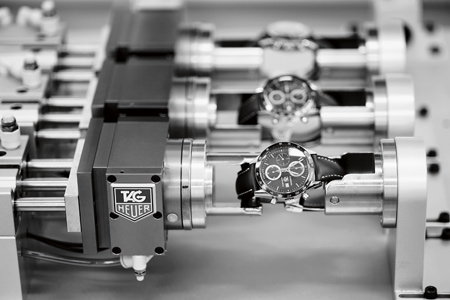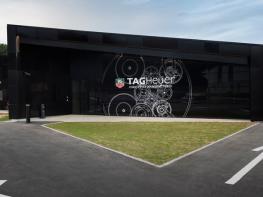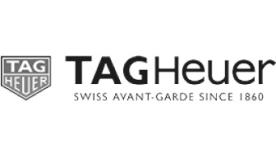In 1860, Edouard Heuer, the 20-year-old son of a shoemaker, founded a watchmaker’s workshop in Saint-Imier, a remote village in the Jura mountains of Switzerland. Today, the company he created, TAG Heuer, is a flagship brand in the LVMH Group and one of the biggest chronograph producers in Switzerland, with the second largest worldwide network of retail outlets in the watchmaking industry.
TAG Heuer is enjoying a 20% spike in growth in a country that no longer produces the quantity of components required by its watch industry. Increased demand, too few components: to counter this two-pronged dilemma, and stay true to its 153 years of proud Swiss heritage, TAG Heuer has invested large amounts of capital and ingenuity into the expansion of its production capacity in Switzerland.
In 2004, the brand opened a Cortech manufacture on a new site in the Jura commune of Cornol. Here, 150 technicians make, by hand and machine, TAG Heuer watch cases in stainless steel, stainless steel and gold, and gold. In 2009, a movement workshop was added, producing main plates and bridges for mechanical movements.
In 2010, TAG Heuer added two movement workshops to its main site at La Chaux de Fonds, one for award-winning “haute horlogerie” mechanical movements like the Mikrograph, Mikrotimer, Yin & Yang, V4, MikrotourbillonS, and the other for its mechanical Chronograph Calibre 1887.
In 2011, TAG Heuer acquired ArteCad. Established in Tramelan in 1885, it is one of Switzerland’s top producing and most highly integrated dial manufactures.
In 2012, TAG Heuer began construction of the fourth TAG Heuer Manufacture in Chevenez, in the Swiss Jura. Like the Chaux-de-Fonds manufacture, it will produce the Calibre 1887 and a brand new integrated mechanical chronograph movement, the 100% in-house developed Calibre 1969. The new 2,600 m2 facility will create more than 100 new jobs, bringing the total number of people employed by TAG heuer in Switzerland to about 800.
Total expenditure to date for the Calibre 1887 and Calibre 1969 is over 40 millions Swiss Francs. Production volume of the innovative movements have outpaced expectations: started in 2010, it will surpass 50,000 units in 2013 and reach a projected target capacity of 100,000 by 2016.
In-house manufactured movements, cases and dials: TAG Heuer is one of a very small handful of Swiss manufactures that can boast such comprehensive production capacities. This exceptional level of watchmaking excellence has earned the company membership in the most exclusive circle the Swiss watchmaking elite, the Fondation de la Haute Horlogerie (FHH).
Retail network
TAG Heuer’s rapid retail growth - 20% of total sales in 2012, up from 15% in 2011 - is due to an ambitious strategy of ever-increasing brand presence on the most high-profile addresses of luxury retail. Today, TAG Heuer products are available in 4,000 outlets and 180 TAG Heuer boutiques in 57 countries. No fewer than 52 of these exclusive shops opened in the last two years.
This has been the most impactful year to date, with TAG Heuer openings in major destinations around the world: the Champs-Elysées, Fifth Avenue, Frankfurt, Paris Opera, Paris Bon Marché, Istanbul, Hong Kong (Time Square and Ocean Terminal) and Macau. The “200” mark will be reached in 2014, with flagships set to open in London, Milan, Madrid, San Francisco, Los Angeles, Honolulu, Macau, Singapore and Beijing. Within three to five years, the projected total is set for 250.
Meanwhile, the brand also opened its first online boutiques this year, in the US, the UK and Australia. It also launched a major renovation campaign, with complete overhauls of existing stores throughout its retail empire.
In terms of productivity per square meter, TAG Heuer ranks among the top retailers among the more than 60 brands in the LVMH Group.
TAG Heuer’s rapid growth, combined with new supply constraints in the Swiss watch industry, have required a comprehensive and far-seeing strategy of reinvestment. The healthy state of the brand’s bottom line have made this possible. These enormous expenditures, both upstream and downstream, ensure its continual health. A pioneering Swiss watch industry for more than 150 years, always at the forefront of innovation in technology and design, it is now solidly prepared for what comes next.
Rapid growth
Image

TAG Heuer expands manufacturing and retail network with the opening of new manufactures and boutiques.
Featured brand





